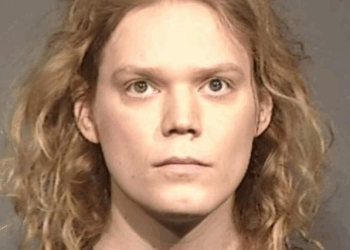Several years ago, I traveled to Amsterdam as part of the National Right to Life delegation for a multi-issue pro-family conference. The event brought together representatives from dozens of countries and organizations working in maternal health, children’s welfare, family policy, and religious freedom. Over the course of four days, the conference addressed a spectrum of bioethical concerns: euthanasia, adoption, trafficking, and the global expansion of abortion access under the guise of reproductive health.
Our delegation included Dr. Wanda Franz, then president of National Right to Life, and her husband, Dr. Gunter Franz, as well as Olivia Gans. We installed NRLC’s large exhibit booth in the main convention hall. It featured fetal development models, scientific literature, fact sheets, and multilingual brochures explaining the consequences of legalized abortion. The aim was to present abortion not as a theoretical concept but as a physical reality, one that leaves lasting scars on families and societies.
The exhibit attracted steady traffic. People came from incredibly diverse backgrounds, African health ministers, Latin American NGO leaders, Eastern European parliamentarians. Many stayed to ask questions. Some took materials for translation. Others simply wanted to talk.
Get the latest pro-life news and information on X (Twitter). Follow @LifeNewsHQ
The scale of interest reflected a shared understanding: life issues are not local or parochial. They are global.
One conversation remains distinct. A couple from Kerala, a state in southern India, approached our booth late in the afternoon on the second day. They wore conference badges like everyone else, but their reason for attending went beyond professional interest. They had started a crisis pregnancy center in their city and hoped to replicate it in nearby regions. Their mission had a narrow and urgent focus: saving unborn girls from sex-selective abortion.
They did not begin with statistics. They started with stories. In their region, cultural preference for male children remained entrenched. Women carrying daughters often endured threats or emotional coercion from their in-laws or husbands. The social penalty for giving birth to a girl, especially after already having daughters, could include abandonment or violence.
Families that could afford prenatal diagnostics often terminated the pregnancy if the fetus was female. Families who could not afford such tests sometimes waited until birth, then took lethal action. The couple said that their work included home visits to women who had recently given birth to ensure the survival of the newborn girls.
That conversation reframed everything I had seen that day. While the conference focused heavily on Western legal frameworks, institutional lobbying, and national-level policy debates, their experience exposed a layer of violence hidden from formal channels. They were not arguing theory. They were trying to save lives on the ground, one by one.
India passed the Pre-Conception and Pre-Natal Diagnostic Techniques (PCPNDT) Act in 1994. It prohibits prenatal sex determination and sex-selective abortion. In practice, enforcement of this law has been fragmented and inconsistent. As of 2025, only 617 convictions have occurred under the act. Eighteen Indian states have not recorded a single conviction in recent years, despite widespread evidence of violations.
The technology used for sex determination has become mobile and difficult to monitor. Ultrasound equipment no longer remains confined to hospitals or clinics. Providers now use portable devices and travel across state borders. Sex-selective abortions often occur in unregistered facilities or private residences. Abortion-inducing drugs are widely available through unofficial channels and used without oversight.
Recent examples illustrate the breadth of the problem. In September 2025, health officials from Karnataka, working with law enforcement in neighboring Andhra Pradesh, intercepted an illegal abortion arranged for a woman who was five months pregnant with her fourth daughter. In April of the same year, investigators in Uttar Pradesh uncovered a network of clinics distributing abortion pills and performing illegal procedures, leading to more than 120 first information reports. In Gujarat, a radiologist and a nurse were arrested after operating a covert abortion service out of guesthouses and private homes.
The demographic effects have reached crisis proportions. According to the Sample Registration System (SRS) for 2023, India’s national sex ratio at birth stands between 917 and 929 girls per 1,000 boys. In some areas, the imbalance is more extreme. Haryana, for example, has reported ratios as low as 879.
The Pew Research Center estimated that in just ten years, between 2009 and 2019, 17.3 million girls were missing due to sex-selective abortion. When deaths from postnatal neglect are included, that figure rises to over 63 million women unaccounted for in India’s population.
These numbers do not exist in a vacuum. The surplus of men in certain regions has created long-term social distortions: forced marriages, increases in trafficking, and growing instability in rural communities. The gender imbalance also undermines efforts to improve education, reduce poverty, and expand healthcare access. Societies that eliminate girls before birth reduce their future economic and civic potential.
At the Amsterdam conference, many organizations addressed the importance of international cooperation, law reform, and cultural engagement. But few conversations acknowledged the gender-specific nature of abortion in p
laces like India and China. When abortion becomes embedded in a society already shaped by gender discrimination, it evolves into a tool of control. The victims disappear quietly.
The Kerala couple did not frame their mission as political. They saw it as a matter of moral necessity. They provided support to pregnant women without institutional backing. They educated families about the dignity of their daughters. They did what policy alone could not accomplish.
The work of saving girls in India is urgent. It requires more than legislation. It requires enforcement of the law, cultural shifts, international attention, and sustained support for those doing the work at significant personal cost. It also demands that we abandon euphemisms and face the consequences of abortion policies that ignore context and reality.
What I witnessed in Amsterdam was not merely a cultural or ideological difference. It was a clear example of how modern tools, legal abortion access, medical diagnostics, and mobile technology can combine with ancient prejudices to produce new forms of violence.
And the world, for the most part, has remained silent.
LifeNews.com Note: Raimundo Rojas is the Outreach Director for the National Right to Life Committee. He is a former president of Florida Right to Life and has presented the pro-life message to millions in Spanish-language media outlets. He represents NRLC at the United Nations as an NGO. Rojas was born in Santiago de las Vegas, Havana, Cuba and he and his family escaped to the United States in 1968.









![Hegseth Demands Fitness Requirements, Says 'Fat Troops' 'Not Who We Are' [WATCH]](https://teamredvictory.com/wp-content/uploads/2025/09/Hegseth-Demands-Fitness-Requirements-Says-Fat-Troops-Not-Who-We-350x250.jpg)

